Our Thoughts
Kites & Cores Cultural Insight for Commercial Advantage
Understanding the opportunities brands have for cultural leverage can drive more effective strategic and creative decisions and deliver better commercial outcomes.
A visit to the Museum of Brands in London, which has a display of brand packaging from the Victorian period to contemporary times, is to bear witness to those brands which have sustained and grown over the long-term – by transforming themselves into cultural icons, e.g. Marmite, Coca Cola, Kellogg’s Cornflakes – and those which have fallen by the wayside as culture has rushed past them and left them behind in its wake (who now remembers Quatro soft drink from the 1980s?). This dynamic is magnified in challenging economic times because culture influences behavioural change, especially when life gets tough.
All brands start from somewhere. Simplistically, they sit on a continuum from small, feisty new kids on the block; through various types and sizes of challengers; up to the big, established habitual purchase brands that anchor categories and consumer behaviour. Where you sit on this continuum should determine your approach, sometimes it creates marketing constraints, sometimes opportunities.
A useful way of thinking about this challenge that can help brands make better choices and increase their cultural relevance and distinctiveness is to define brands along the continuum as either ‘Kite’ brands or ‘Core’ brands.
Brands are constantly buffeted by the winds of cultural change just as people are. Brands, dependent on where they sit on the continuum, need to decide if they are better off standing against the winds and offering reliable stability, or to let the wind take them with it as it wafts, or throws, them about. In the former case ‘Core’ brands (primarily big, established ones) can offer weighty and substantial stability against the turbulence, holding us with their familiarity, consistency, and reliability. In the latter case, brands (mainly, younger, challengers) can behave like ‘Kites’ and launch themselves into the air with dynamic creativity and imagination that excites us and defies our expectations about the category and the direction of travel. At times, Core brands will have selective opportunities – through innovation or communications – to behave ‘Kite-ishly’, but it is a game of risk and reward. Kite brands tend to lack the cultural weight to stand firm, so need to execute against cultural change to their advantage.
In an age of political, social, & economic uncertainty – such as the one we now find ourselves in, mental availability can be enhanced by consciously embodying one of these two types of identity. You should ask yourself, are you a Kite or a Core brand?
Culture impacts mental availability. The now familiar work conducted by the Ehrenburg-Bass Institute and Byron Sharp, contends that the amount of space available in people’s brains to remember brands and categories is limited. As a result, more effective branded packaging and advertising drives stronger mental availability – that is awareness and memory of those brands. The cultural analyses we’re constantly conducting at Sign Salad clearly demonstrates that where this marketing is culturally aligned, it is more effective and able to build mental availability. Both Kite and Core brands need to align themselves culturally, but they need to do it in different ways.
Core brands are those which have been in the landscape of our supermarket shelves, and kitchen & bathroom cabinets for what seems like forever. They embody mythic storytelling power through the values they project, the rituals they are associated with, and the incidents they have accompanied us with over many years. These brands exist as enduring cultural artifacts with significant symbolic roles in our lives, not merely vehicles for the delivery of functional products. Whenever we encounter them, they take us back to a psychic place of safety, security, pleasure, reassurance. We know where we are with a tin of Heinz baked beans, a bowl of Weetabix, a can of Coca-Cola, a loaf of Hovis, or a bottle of Budweiser. They have impact because they hold us in place over the long-term, creating a fusion of cultural and commercial stability that we can rely on, and to which we are devoted. The recent Heinz AI experiment demonstrates the power of Core brands and their powerful impact on our memory structures and mental availability. They used an AI algorithm to search social media globally for ‘Ketchup’, and overwhelmingly the images that were returned were of a Heinz Ketchup bottle. https://www.youtube.com/watch?v=LFmpVy6eGXs&t=22s.

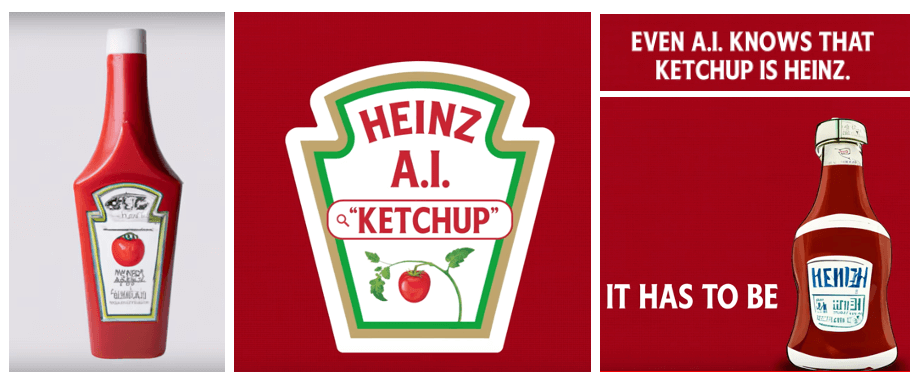
The role of Heinz Ketchup as a Core brand is to provide us with a powerful and enduring sense of comfort borne of its unchanging identity and reliable presence. Everything else is subject to social flux, but it has ‘always’ been there, and it ‘always’ will. The inverted commas are necessary because of course it hasn’t always been on our supermarket shelves and in our kitchen cupboards, at some point it was introduced onto the market, but the point about Core brands is about consumer perception – they appear to have always been around and that perception is enough to give existential comfort in stormy times. Memory structures are created and reinforced by the role of the brand at the core of culture.
Kite brands, by contrast, offer mercurial excitement as they are pulled – and willingly go – in the direction the cultural wind takes them in. They respond to the force of that wind by creating innovative products and comms which inject excitement into the brand by responding to immediate cultural shifts, alerting us to their dynamic cultural power and presence. Kite brands do not respect category tradition, they disrupt it irreverently blowing cultural hurricanes to knock the Core brands off their feet. They have impact because they lift us up with short-term bursts of explosive fun and pleasure, and that excitement galvanises our attention. Sometimes this is planned brilliance, sometimes a lucky hunch. Cultural understanding is a key input to increase the likelihood and availability of the former!
Kite brands are opportunists which take advantage of a sudden gust to make a culturally strong statement. UK craft beer brand Brewdog’s release of limited edition variants, capitalised on and mocked political scandals, e.g. ‘Barnard Castle Eye Test’ following the UK PM’s political adviser Dominic Cummings’ lockdown misdemeanours, and their more recently released ‘Boris Lie-PA’ marking the departure of the former British Prime Minister. These were exercises in understanding the cultural tone of voice in the moment, a nimble speedy response to shifting events. But this was an extension of the identity and value system that was at the heart of Brewdog’s brand DNA when it launched onto the market in 2007.
Designed as a ‘Punk’ brand dedicated to overturning the dominance of the mainstream beer category, Brewdog understood that the context in which it sat had shifted from a culture which was deferential to top-down authority structures, institutional tradition, mass production, and luxury ostentation (represented in the beer category by Core brands like Carlsberg using gold and silver assets, heraldic symbolism, and self-satisfied superior tones of voice: “probably the best lager in the world”), to one which was beginning to favour bottom-up populist irreverence, street-level aesthetics (graffiti & tattoo design), hand-made craft production, and conversational tone of voice.
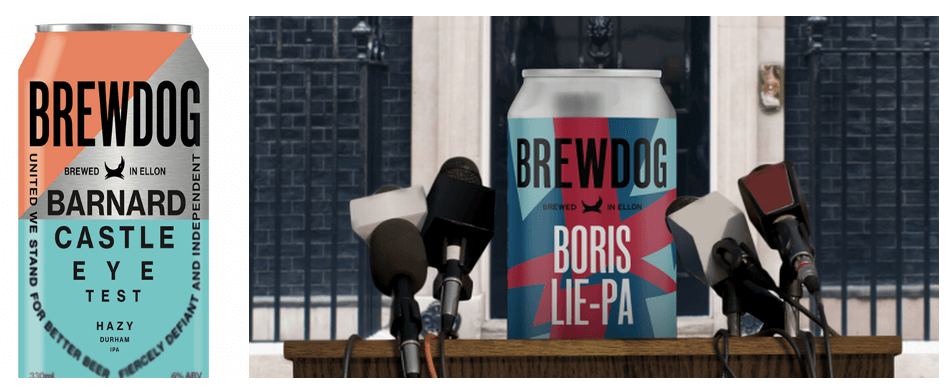
Brewdog was created, and was symbolic of, a moment of radical change in society – the reversal of decades of cultural values. They have reminded us of their original identity and purpose by creating short-term innovations. Kite brands act in this way through activations, innovation or advertising to gain consumer attention and demonstrate their alignment with short-term culturally momentous events.
This kind of speedy response captures the instant cultural moment, plaiting the relationship between events and the brand into meaningful braid. In these instances, Kite brands understand that quick response is crucial to inject themselves into the cultural story, and create a relevant three-way conversation between culture, brand, and consumer.
While Kite brands are designed to garner short-term attention through innovation or advertising activity, Core brands maintain their cultural presence over the long-term. As Laffley & Martin argued in their influential 2017 article in the Harvard Business Review, consumer commitment to Core brands is mostly based on habit not loyalty. It is easier to keep purchasing and engaging with brands that you are familiar with and rely on. ‘Loyalty’ is created by habit rather than through a conscious choice to repeatedly buy the same branded product. This is especially the case in an era of increasing online shopping practices, when pressing the repeat button for your weekly digital shop is far swifter and less troublesome than consciously thinking carefully about what you actually need or want. Frictionless shopping is the name of the game, and Core brands can win out through the comfort of predictability, repetition, and certainty. It is this inertia that Kite brands fight hard to disrupt.
BUT it should never be seen as strictly binary. Core brands sometimes need to adopt short-term Kite-ish tactical activities to attract short-term attention and maintain relevance. Our experience at Sign Salad tells us that this is hard to do without deeper cultural understanding, and brands get it wrong as often as they get it right.
The recent victory in the Euro championship finals by the England women’s football team, prompted a raft of freshly produced awareness campaigns and social-media memes which allowed Core brands like Royal Mail, Weetabix and Sainsbury’s – three culturally embedded British brand icons – to create fun and pointed comments on the Lionesses success, which also maintained their brand essence and equity. Witty and brand-focused in equal measure, they captured in a single image the pleasure of victory in a British sport starved of silverware and success.
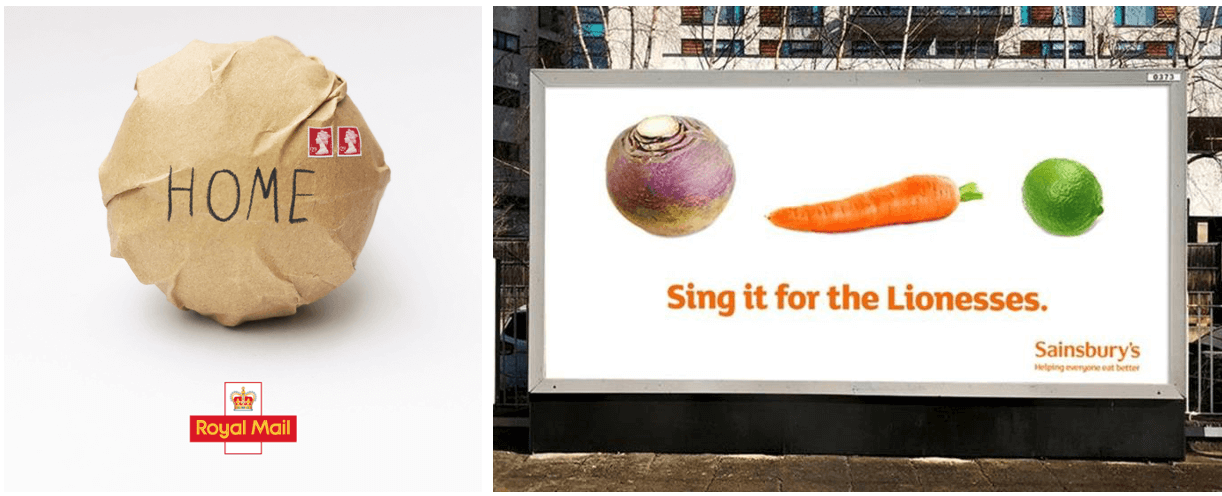
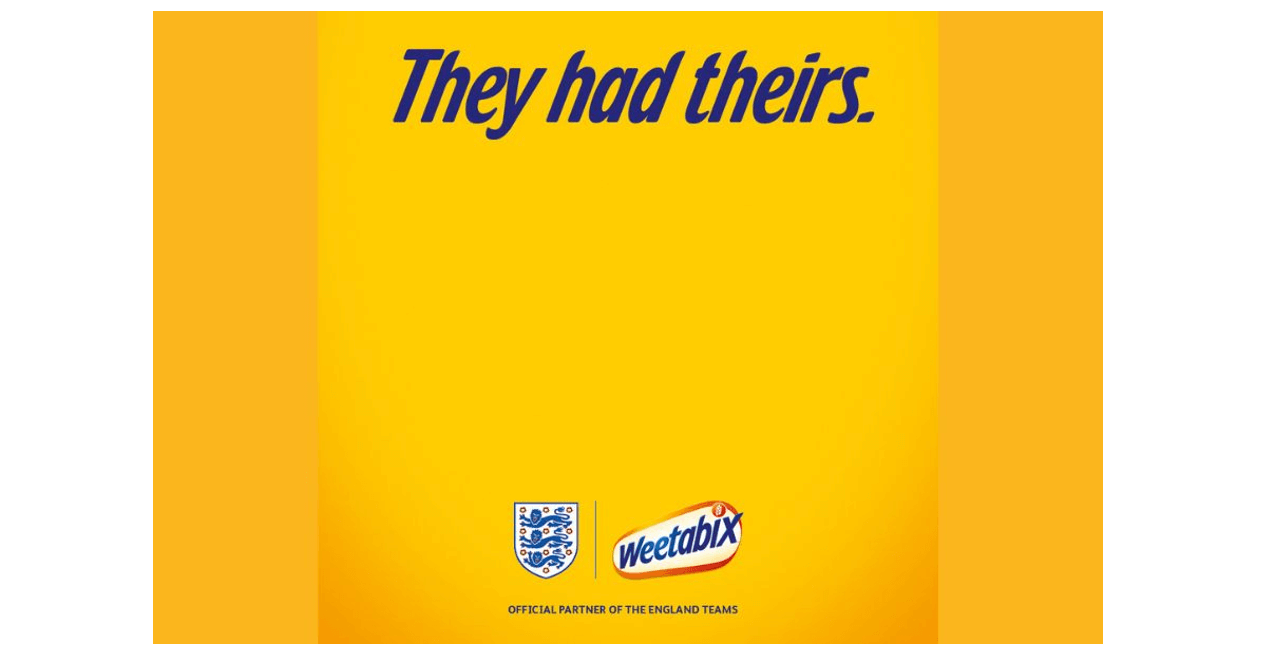
But success for Core brands adopting Kite-ish tactics surely lies in strongly connecting the short-term cultural event to the brand’s long-term core value and identity, in the way that Weetabix, Royal Mail and Sainsbury’s achieved. There is a risk for Core brands though, if the drive for brand awareness/call-to-action (by employing short-term Kite-ish wit), compromises the brand essence. The speed at which brands move in digital culture makes them vulnerable to a misstep in that sense.
The recent intense heat wave in the UK prompted Magnum ice cream – a cultural Core brand – to develop an inventive piece of tactical advertising capturing the UK mood and placing Magnum at the heart of it by suggesting that “on the hottest day of the year ever, enjoy it before it melts” . But the Magnum brand had worked hard over a very long time to culturally code its refreshing power and brand experience through the sharp crack of its hard chocolate shell and the sensory invigoration of its soft, cold ice cream, and the unexpected juxtaposition between the two product elements: strong & soft, lively refreshment and relaxing pleasure, wake us up & calm us down. Surely then, Magnum would act as a reliably refreshing bulwark against the heat and a pleasurable antidote to anxieties about too much sun. But instead, this ad acted to increase anxiety about needing to rush for a Magnum because even they couldn’t help us in the face of overpowering temperatures. If Magnum melts then where could the consumer go for help in the heat? Isn’t that crack supposed to be a cooling weapon offering powerful sensory refreshment? In this instance this Kite-ish ad was a nice joke, but it potentially undermined the brand’s long-term cultural capital and Core brand identity.
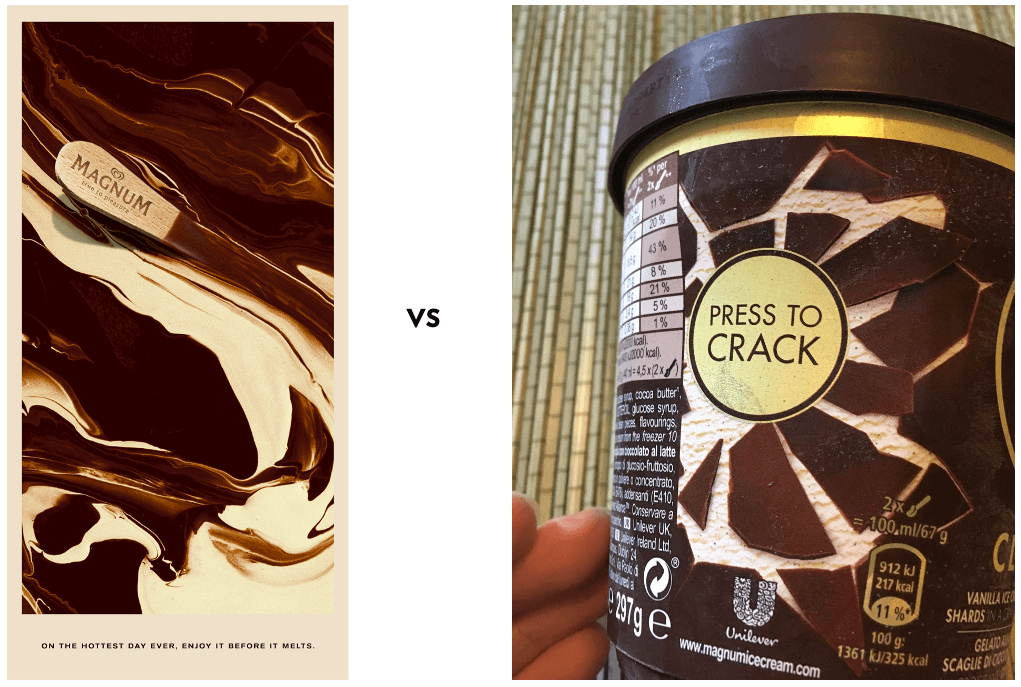
Similarly, Kite brands can evolve from being category disruptors to become Core brands – indeed they all want to. Brewdog is now very much in the tipping point of shifting from being a Kite brand to having the enhanced scale of production, increased market share and penetration (and therefore mental availability) which makes them more of a Core brand. Similarly, Netflix was a Kite brand when it first arrived on the scene. A live streamed film, documentary, & video archive on your tv was revolutionary at the time it started its streaming services in 2012 and developed its own original programming content a year later in 2013. It challenged both the dominance of cinema AND terrestrial TV on two fronts. It was an upstart brand with a strong Kite-ish identity in which its CEO defined its key competition as ‘sleep’, not its digital competitors Amazon or YouTube. It’s billboard campaigns took a side-wipe at the interruption of advertising on TV, and at the lower quality of terrestrial channel entertainment content. Its innovative accessibility across devices captured the on-the-go patterns of 21st century lifestyles, and the flexibility of its pause/play functionality enhanced its value vs appointment-to-view culture. Netflix’s product met the cultural need and zeitgeist, and its Kite-ish brand identity, behaviour, and bold and cheeky tone of voice made it instantly recognisable and culturally exciting.

But as brand awareness grew, the number of subscribers increased, and the success of Netflix began to be confirmed, the brand began to adopt the personality of an embedded Core brand – confident, serious, self-assured, large, established, and dominant. All successful brands reach this tipping point.
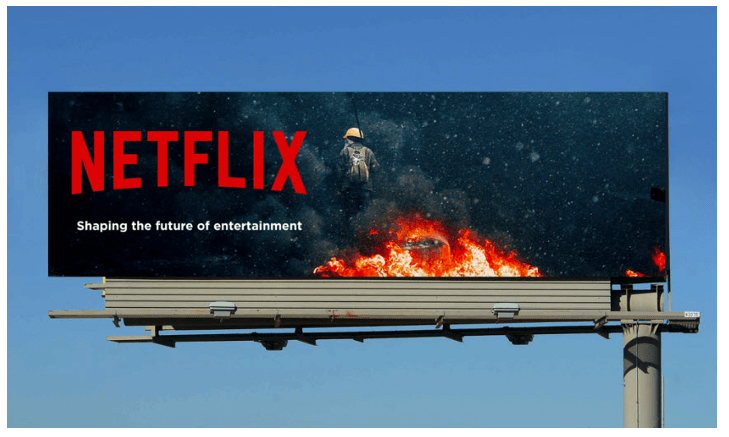
Today, Netflix acts and behaves like a Core brand, and suffers the ups and downs of being a brand which though reliable and recognisable, is increasingly accused of predictability, and lacking innovation, a charge they themselves laid at the doors of their competitors when they entered the market 10 years ago. Indeed, as their monthly fees have risen, the number of cancelled subscriptions has increased, and their once imaginative and differentiating content enters 3rd & 4th seasons (House of Cards, Stranger Things, Never Have I Ever), do they now need to return to acting Kite-ishly, with the wit, bravado, and inventiveness that such an identity and the accompanying comms demands?
As the Netflix example demonstrates, the speed of cultural change has a powerful effect on brand relevance, salience, and meaning to consumers. Without a deep understanding of how and why culture changes, what it means for your brand, and how to ensure your brand is aligned with where culture is going, you can’t win in increasingly competitive market places in which mental availability is dependent on cultural relevance, and in which your identity as a Core or Kite brand needs to be clear and well-defined. Brands need to build this cultural understanding into their strategy and then by using the right narratives/codes, imagery, & language to communicate the strong connection between your brand and culture, you can bring your Core-ness or Kite-ness to life in a more compelling way for consumers increasingly tossed and turned by the winds of change.
In other words, it’s crucial for Core brands to understand when & how to act like a Kite brand, and fundamental for Kite brands to always be seeking to transform themselves into Core brands. Other examples of the latter – Innocent smoothies and Ben & Jerry’s ice cream – also went on journeys of transformation from category innovator/creators to category leaders in a wider competitive field. There is no greater confirmation of the cultural shift from Kite to Core status than being bought by a larger business and absorbed into a ‘house of brands’ (Unilever for Ben & Jerry’s and The Coca-Cola Company for Innocent). To achieve this demands dynamic and nuanced cultural analysis, to ensure that you stay true to your brand’s cultural true north and avoid the risk of getting it wrong either as a Core brand trying to be Kite-ish, or vice-versa. This should be a considered strategic choice, but is typically delivered through the whimsy of the occasional, feisty, tactical ad.
In economic booms, consumers have disposable income, and have confidence to experiment with newness. Kite brands reflect this confidence, and experiment with new variants, sub-brands, activations, and above the line comms or pack re-designs. But in economic declines, Kite brands need to carefully calibrate their ability to attract short-term attention with building long-term brand identity & protecting cultural capital. Core brands meanwhile can capitalise on the insecurity of social, political, and economic uncertainty by positioning themselves as the antidote to such flux by being stable, certain, and reliably familiar.
The point is that only by first understanding, then building and embedding its cultural meaning, can a brand leverage this in a conscious and sustainable way. Understanding the cultural codes necessary to being a Core and being a Kite – and knowing when each must adopt the identity of the other – is crucial to providing a framework for making fundamental decisions about your brand, what you want it to mean, and what you can do with its positioning, comms, digital presence, and other channels. This requires a long-term, ongoing engagement with the cultural dynamics of your brand and the context in which it sits, and we would say expert support and input to achieve this.
3 key takeouts for brands:
- In current economically challenging times, Core brands need to focus on reinforcing and leveraging their long-term cultural strength & relevance AND stay fresh by adopting short-term ‘Kite-ish’ innovations & comms BUT not at the expense of their core brand The danger of Kite behaviour for Core brands is that they can get it wrong and they need to build a deep understanding of their cultural meaning to leverage it.
- Kite brands must always, but especially in economically challenging times, be culturally salient not just disruptively clever, g. choose the right messages and use different platforms to disrupt category traditions – in a digital context where brands need to/have permission to adopt a different TOV to communicate their relevance to that demographic, and be spot on the cultural trend. It is easy to get it wrong.
- All Kite brands need to aspire to becoming Core brands, and they will reach a tipping point once they achieve a relative market penetration. At that point, understanding and driving their cultural relevance is critical to shift from category innovator/creator to category leader in a wider competitive field. This is a strategically challenging point of change and brands require deep cultural insight and understanding of the brand’s DNA to navigate it.
Alex Gordon, CEO

